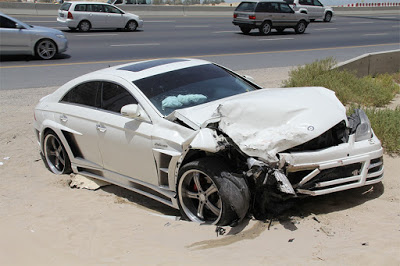 Mike James is a freelance motoring journalist, partnering with George Ide on a series of advice-based articles.
Mike James is a freelance motoring journalist, partnering with George Ide on a series of advice-based articles.
Being involved in a car accident is not only shocking and frightening, it is also disorientating. For some people it is natural to assume they are at fault, even if they could have done nothing to avoid the event. For others, it is a natural response to blame others even if they were in the wrong. But it pays when you have an accident to be aware of your rights and also to know what steps you should take to resolve the situation.
Firstly, it should be mentioned that it is in the terms and conditions of many insurance policies that you should not accept fault at the scene. This is partly because you do not know the full circumstances of the accident and it would make very difficult for your insurance company if you have already accepted the blame. Instead you should keep a cool head and simply get the insurance companies involved to sort out who may be at fault.
How does an insurance company determine fault?
When you have an accident and the claim is passed on to your insurer, they will use an accident claim handler to establish who was to blame. In almost every accident that takes place on the roads, it will be the case at least one driver has done something wrong that places them at least partially at fault. Indeed, the vast majority of accidents happen because at least one of the drivers involved made an error.
It should also be noted that it’s a common misconception that one driver is entirely at fault. Insurance claim handlers will often apportion blame – this could mean that two or more drivers take a share of the blame.
Was someone at clear fault?
With some accidents there can be a number of complicating factors that make it very challenging to work out who is to blame. However, in other situations it can be the case that it is very easy to prove that one driver was specifically at fault. One example is that if a car is speeding at the time of an accident, the driver will always be at least partially blamed for causing the accident, even if there were other driver errors made by others.
Another time that can always be shown as clear fault is in rear end collision. The fault here almost always lies with the driver that hits the rear of the other car. This is because of the rules regarding the safe stopping distance that should be held by the car behind. Perhaps one of the rare examples of a rear end collision that is the fault of the car ahead is if they were reversing on the road.
It’s also true that you can show blame easily for accidents that result from parking. For example if you attempt to pull away from a parking space and hit another car in the process, this will almost always be deemed to be your fault, as the car that is already on the road has right of way.
Watch out for traffic signs
As we mentioned before, it can be a common occurrence that people who have suffered a car accident are somewhat disorientated. This can mean that you will miss important details about what may have caused the accident. Even if it initially appears to have been your fault, there may be circumstances that show that it was in fact the other driver. For example, if they attempted to run a red light or disobeyed a stop sign, they would be at fault.
Proving fault
Given that there can be many extenuating circumstances at an accident, you should always be careful to gather as much evidence as you can from the scene. Take clear pictures of both or all of the cars involved immediately.
You should also look around the scene to check for signs of evidence that traffic signs have been violated. You might find skid marks from the other car or there may be traffic lights nearby that may explain how the accident occurred.

